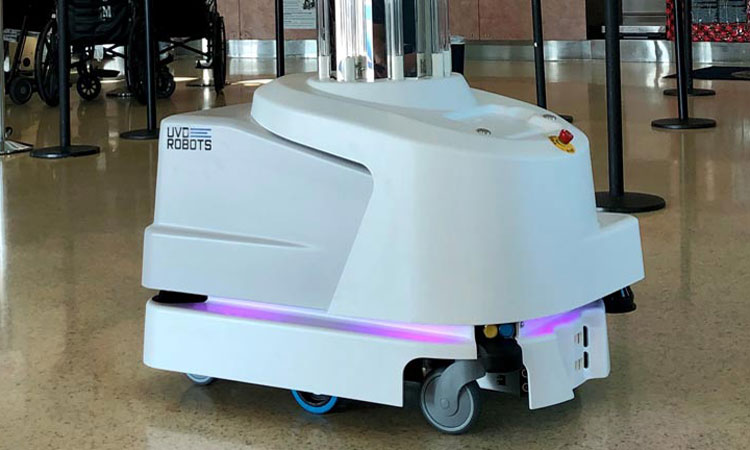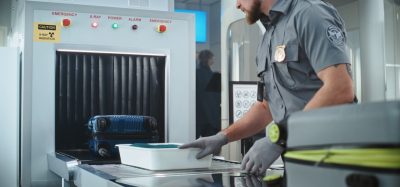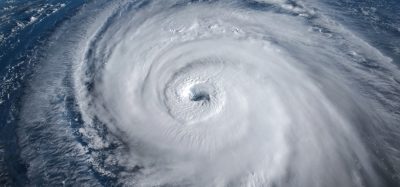Autonomous cleaning robot introduced at Key West International Airport
Posted: 14 December 2020 | International Airport Review | No comments yet
The autonomous robot is said to eradicate 99.9 per cent of pathogens, including COVID-19, and disinfects the air using UV technology.


Credit: Key West International Airport
Key West International Airport (EYW) has become the first airport in Florida, U.S., to implement a new autonomous robot that eradicates 99.9 per cent of pathogens (including COVID-19) and disinfects the air using ultraviolet (UV) technology. The robot works on a molecular level to destroy the DNA of the virus so that it cannot multiply.
Key West Airport partnered with Florida-based iP Program (a division of Gallo Medical) as it looked at the various solutions that were available to meet the disinfecting needs of all touchpoints, inclusive of the air, where viruses live and thrive.
Richard Strickland, Senior Director of Airports at Key West International Airport, said: “UV technology is another fantastic disinfection tool to rid surfaces of COVID-19 currently on the market. Our continued commitment to the health and safety of all of our guests, as well as our employees, has to come first.”
Join us live: Shaping the Next Generation of Hold Baggage and Air Cargo Screening
Join us live for an insightful webinar on 11th December at 14:00 GMT, in collaboration with Smiths Detection, as we explore the strategic balance of operational efficiency, regulatory compliance, and sustainability in high-volume security environments.
This session offers a focused look into future-proofing your security strategy.
Key learning points
- Cost Reduction: Strategies to minimize bag travel time while simultaneously reducing operational costs.
- Regulatory Roadmap: Insights into the next wave of regulatory changes and their impact on future investment decisions.
- Sustainable Systems: Practical approaches to building sustainability into security systems and lowering the total cost of ownership (TCO).
- Scalable Solutions: Real-world examples of scalable systems supporting current airport growth and preparing for tomorrow.
Register now for expert insights, case studies, and actionable strategies on operational efficiency!
Since the beginning of the COVID-19 pandemic, the airport has taken multiple efforts to help mitigate the threat of the virus. These efforts included: Deep and increased frequency cleaning of high-traffic areas and touchpoints; mask and social distancing signage; mandating and providing masks for all personnel and users of the airport; the purchase of all new seating for comfortable social distancing; a departure terminal expansion for additional space and state of the art restrooms; anti-microbial and touchless dispenser and fixtures; and installation of hand sanitiser stations throughout the facility.
President of iP Program, Christine Gallo, said: “We are thrilled to work with Key West International Airport to demonstrate how UV technology can truly revolutionise disinfecting public spaces in record time without the need for harsh chemicals. The Food and Drug Administration (FDA), World Health Organization (WHO) and the Federal Emergency Management Agency endorsed UVC as an effective germicidal treatment that destroys, kills and inactivates microorganisms, including viruses, bacteria and fungi.”
Join our free webinar: Beyond silos: How ecosystem thinking elevates the airport experience
In today’s complex aviation landscape, airports are moving beyond siloed operations to embrace a new era of collaboration. This webinar focuses on how leading airports are using ecosystem thinking to adapt, personalize, and continuously improve every touchpoint, boosting both passenger satisfaction and non-aeronautical revenue.
Date: 13 Nov | Time: 10:00 GMT
REGISTER NOW TO SECURE YOUR SPOT
Can’t attend live? No worries – register to receive the recording post-event.
Related topics
Autonomous Technology, COVID-19, New technologies, Passenger experience and seamless travel, Safety, Terminal operations
Related airports
Related organisations
Federal Emergency Management Agency, Food and Drug Administration (FDA), Gallo Medical, World Health Organization (WHO)


















